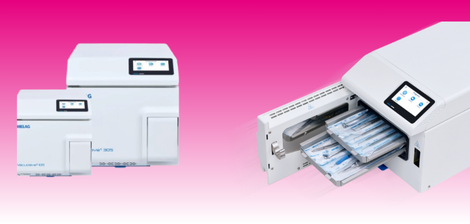Infection control: confident or confused?
In a recent survey we commissioned among dental professionals we found that confusion about infection control regulations is rife.
Seventeen per cent of those we asked said they needed further guidance on the regulations and almost one fifth were not sure if they even understood the requirements.
It’s this lack of understanding that is leaving many practices and patients vulnerable.
The risk
Healthcare-associated infections are estimated to cost the NHS approximately £1 billion every year.
In addition to increased costs, each one of these infections means additional use of NHS resources, greater patient discomfort and a decrease in patient safety.
According to NICE an estimated 300,000 patients each year in England acquire a healthcare associated infection following NHS treatment. In 2007, methicillin-resistant Staphylococcus aureus (MRSA) bloodstream infections and Clostridium difficile infections were recorded as the underlying cause of, or a contributory factor in, approximately 9,000 deaths in hospital and primary care in England.
What’s more, the impact of cross infection to clinical staff is believed to be far bigger than records show.
The Health and Safety Executive suggests there may be an infection rate of 30/100,000 a year among nurses. Most of these infections will be with diarrhoea-causing viruses or bacteria but there is the potential for more serious infections.
Misplaced confidence
During our survey we also found that over half (59 per cent) of the dental professionals that we spoke to said they felt confident about infection control.
Great news. But we dug a little deeper and found that their confidence may be misplaced.
Less than half (45 per cent) of dental professionals are aware of the importance of cleaning dental instruments with water that is at a temperature between 40 to 45 degrees.
Only 47 per cent of dentists know how long dental unit waterlines should be flushed between patients; that’s less than half.
And nearly a fifth of dentists (19 per cent) believe that dental unit waterlines do not need to be flushed between patients.
PPE problems
Worryingly only 26 per cent of dentists gave the correct answer when asked to outline the order of dress for personal protective equipment. To reduce the risk of transmission of infectious agents, personal protective equipment must be used appropriately and put on in the correct order.
The correct order for personal protective equipment is:
- Put apron overhead and fasten at the back
- Secure and tie mask or fit elastic around ears
- Fit mask tight to nose and under chin
- Place protective goggles over face and eyes
- Adjust protective shield
- Put on gloves extending over the wrist
To replace or clean?
In other areas the research points to dental professionals wasting considerable time replacing or cleaning instruments when they are not required to, while neglecting what needs to be done. This contributes to empty patient chair time, which is ultimately a cost to their business.
Over half (61 per cent) said they clean patient bibs when a new bib should be supplied for each new patient. Materials such as bibs, which come in to contact with patients, can be a host for bacteria and infection.
Let’s clean up the confusion
Over the years the industry has seen a variety of opinions about the interpretation of the regulations for infection control. And therein lies the problem.
Dentistry is an ever-evolving industry with many technological advances. Even the type of equipment used by a dentist can be different from one year to the next. So, understandably it will be hard to keep up with how to maintain equipment and other carriers of bacteria in the treatment room.
Infection Prevention &Control course is designed to instruct the clinical team to operate safely, practically inline with current guidelines and legislation
The team also offers more specialised courses and hosts seminars across the UK on topics including dental radiography and radiation protection, safeguarding and clinical record keeping.



